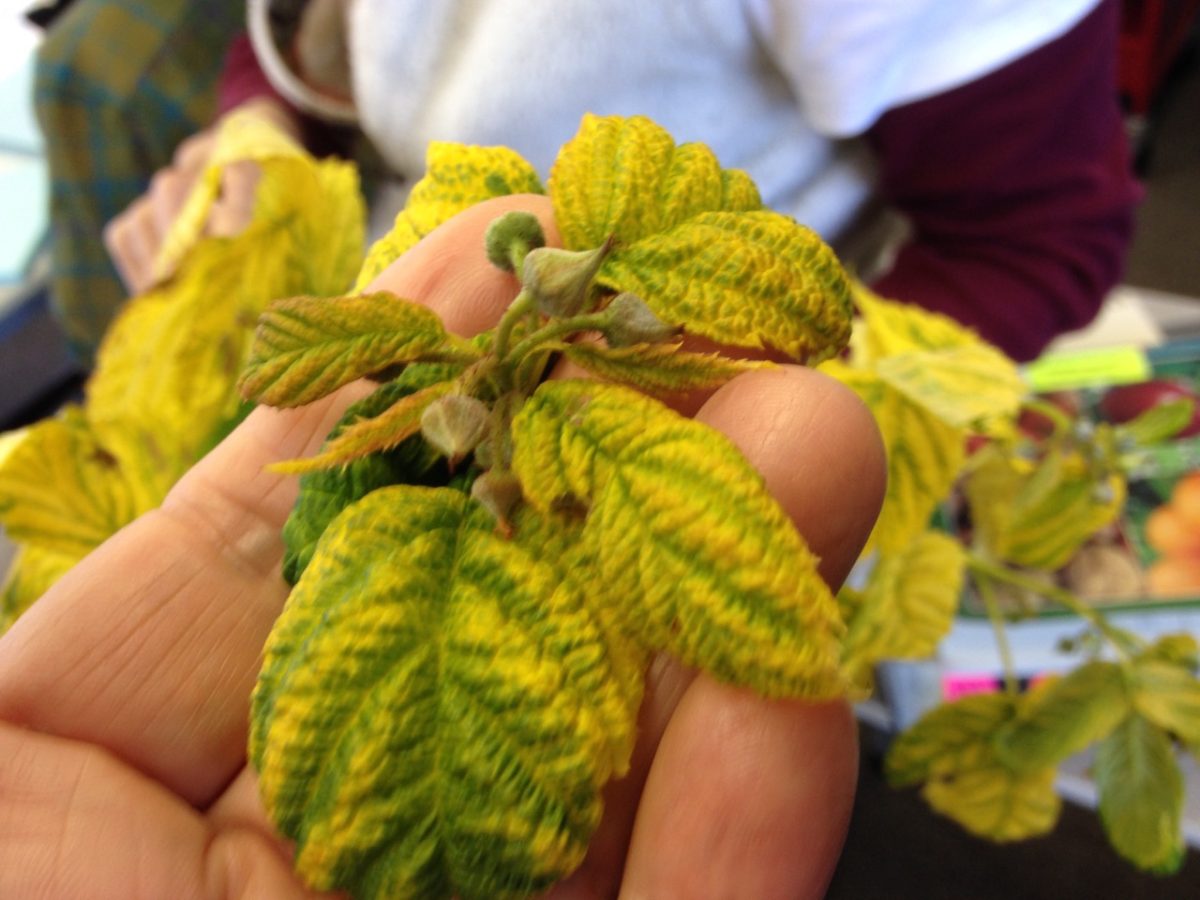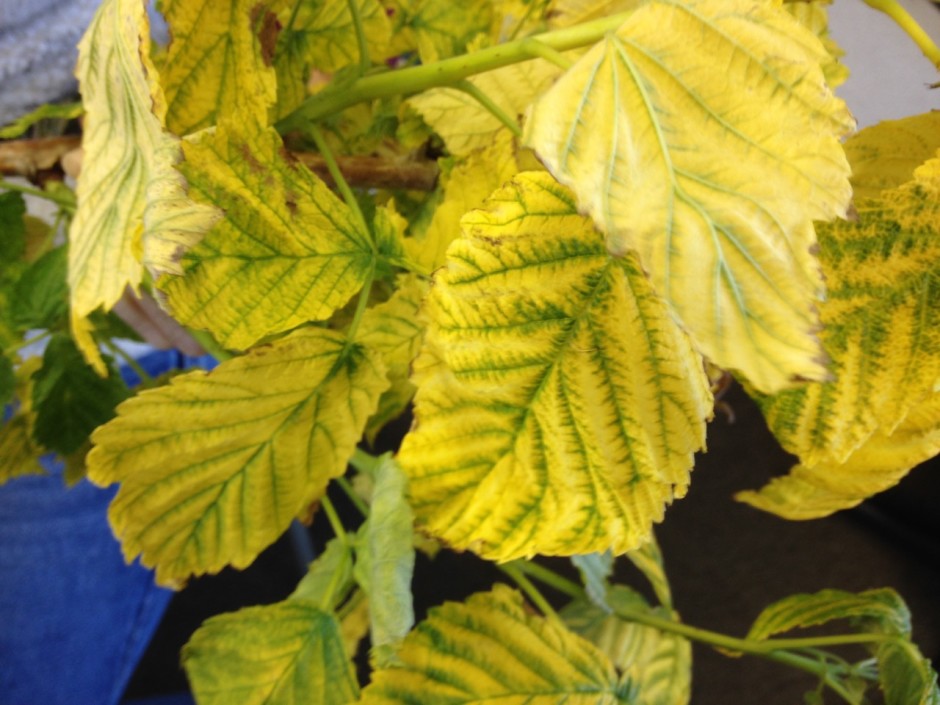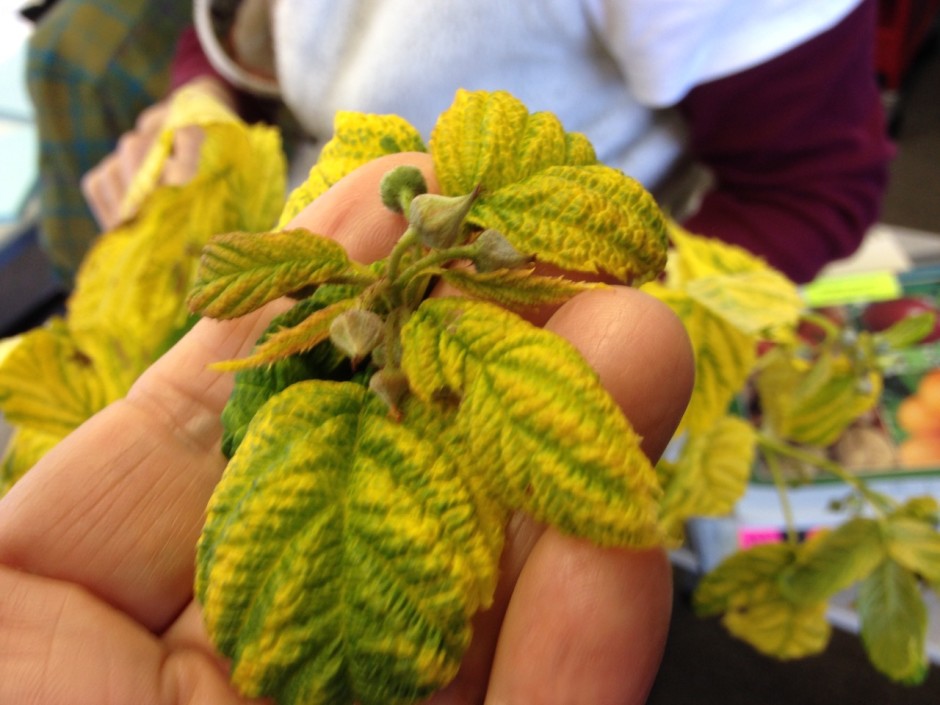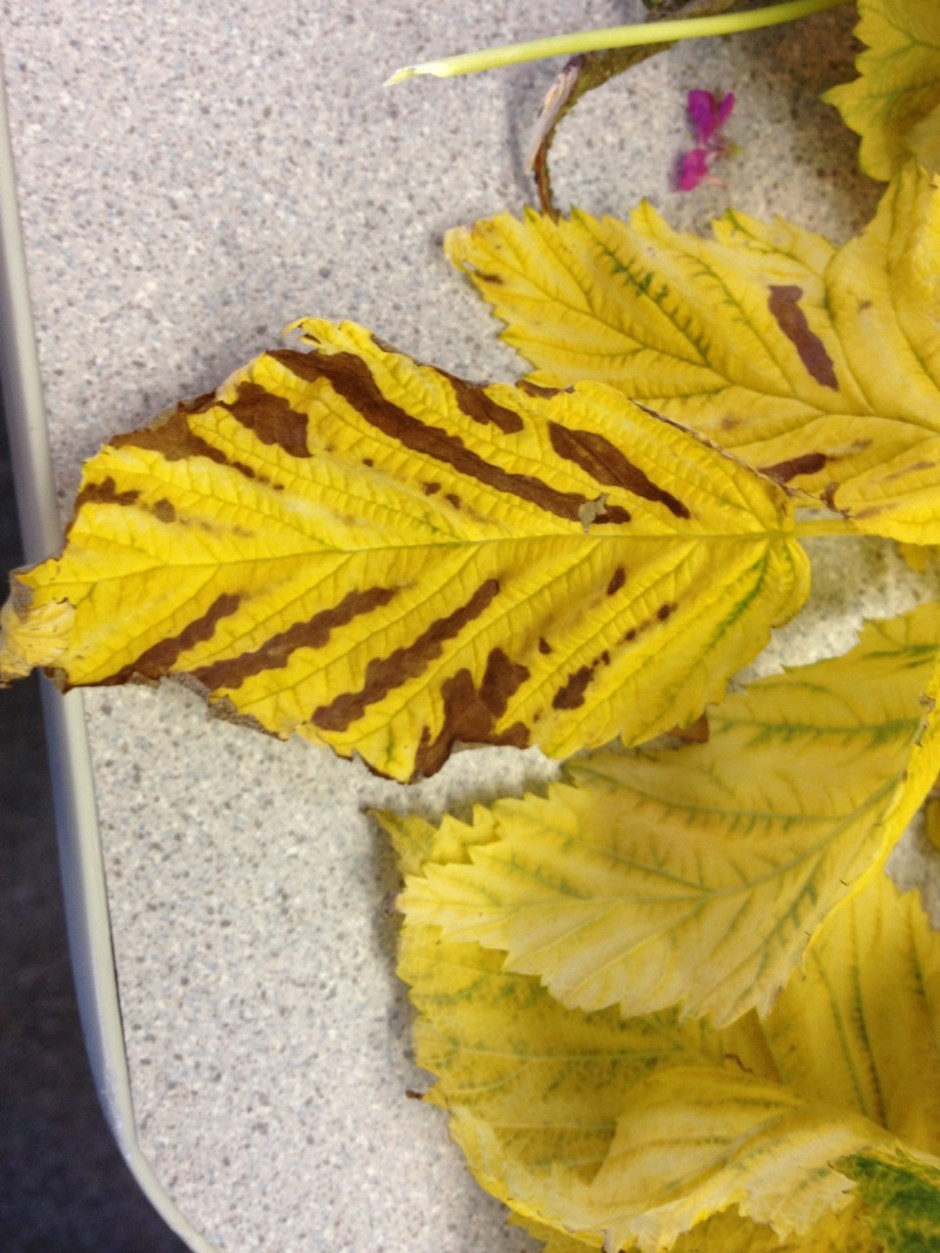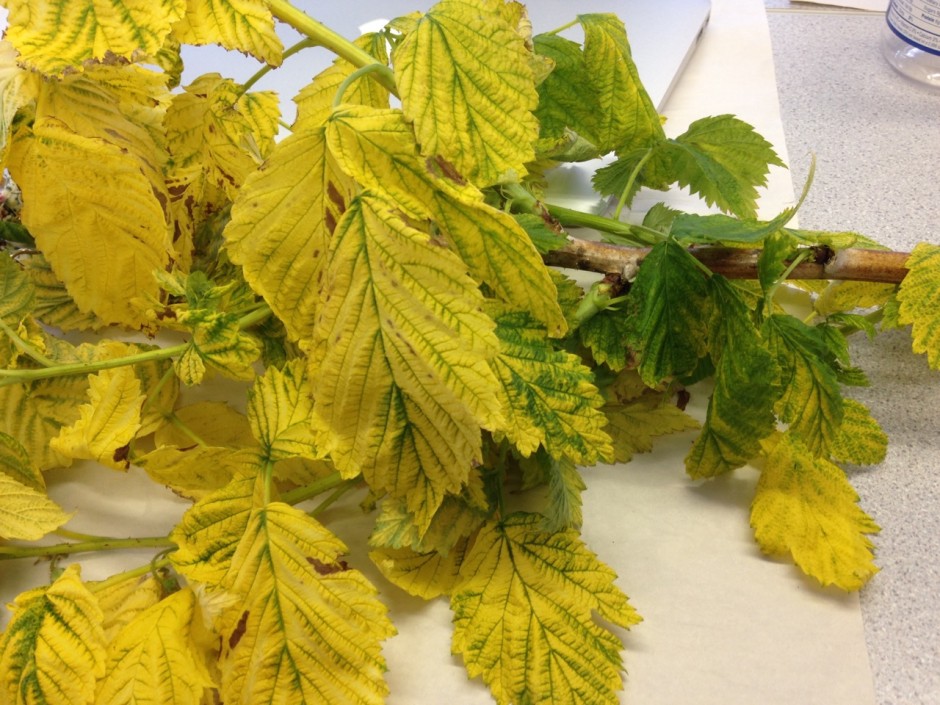My first hunch was A virus and then I got off the track thinking soil amendments. The client had fertilized with both fish emulsion and regular fertilizer. Crazy trick of the brain because the symptoms would show up with lack rather than too much.
Madame Parsley
My question to WSU:
Hi Jenny,
The client came in today with these raspberries in a community garden. No major changes other than moving them from a wetter part of the garden to a drier part a few years ago. She said the plants that showing symptoms were new last spring from someone’s garden and had a bit of discoloration on some of then last summer and only in the row of the new plants. This year more plants and in different rows are showing leaf discoloration.
They were all pruned back to 3’ in late Dec/eary Jan and the used stalks removed.
Fertilized with fish emulsion and a balanced all purpose fertilizer( organic) in March.
Of the plant in the row exihibiting these symptoms, it is not every cane, just some within the plant while the pattern is all over the cane – top to bottom.
It looks like too much and to many for a or a nutrient deficiency to me. I realize in writing this, I did not ask the soil ph question. I will get that from her.
I need your opinion before saying take them all out and you might have virus.
I read the pnw : http://pnwhandbooks.org/plantdisease/raspberry-rubus-spp-viruses
and ucdavis: http://www.ipm.ucdavis.edu/PMG/GARDEN/FRUIT/DISEASE/visusdiseases.html
http://www.ipm.ucdavis.edu/PMG/R/D-CB-RBDV-FO.001.html
Thanks for your time and ideas on this one.
here is the response from Mt Vernon:
RBDV is pretty common and another reason why a lot of commercial growers remove plantings after 3-4 years, particularly in IQF situations because crumbly fruit cannot be processed in this manner. If you just want to process them, I don’t see a big issue with the plants at present. However, stunting and yield reductions can also occur, which may justify replanting. Plus, the pollen is infected and removing the planting will minimize further spread. Some varieties with demonstrated resistance to RBDV include ‘Cascade Dawn’, ‘Willamette’, ‘Chilotin’, ‘Boyne’, ‘Latham’, ‘Cascade Gold’, and ‘Nootka’. ‘Wakefield’ appears slow to develop RBDV.
Unless you plant with a resistant variety, RBDV will likely reappear within 3-5 years.
here is the response from Jenny:
Good morning. Finally getting to emails!! I had a similar sample in 2013—bright yellow leaves that turned out to be a response to raspberry bushy dwarf virus (RBDV) or a complex of viruses, which is a common issue found in the PNW particularly as you move north. If you want to have the sample tested for a confirmation of this diagnosis, I could probably arrange for it at the USDA Small Fruits Virology testing lab). Send a few random yellow shoots from the two rows that are showing the symptoms. See the sections in http://pnwhandbooks.org/plantdisease/blackberry-rubus-spp-virus-diseases
The main issue with RBDV is that the fruit is crumbly-so no good for the prime markets of individually quick frozen (IQF) fruit: http://pnwhandbooks.org/plantdisease/raspberry-rubus-spp-crumbly-fruit but jams/pies can still be made from the fruit.
No cures exist for virus diseases in plants—RBDV is pollenborne so new plantings in this area have the potential to become infected from whatever the source of the current infection. Some cultivars show more pronounced symptoms that others. So that may account for the pattern in the planting if the rows are different cultivars of raspberry. The other viruses often found in association with RBDV are aphid-vectored. So again movement from one plant to another is quite common.
If nutritional (which I am not suspecting given the fairly good size to the growth), it would be much more likely to be a deficiency than an excess. Sometimes giving the plant a complete foliar fertilizer can alleviate symptoms for this type of problem-but that still leaves you with determining the problem of why it happened in the first place.


